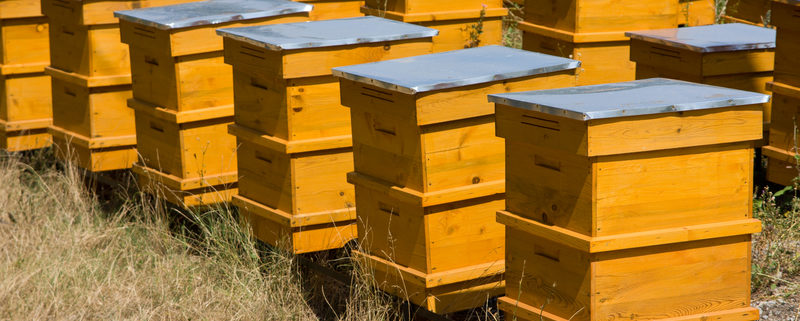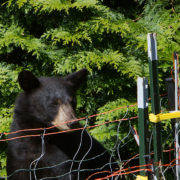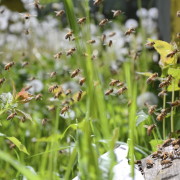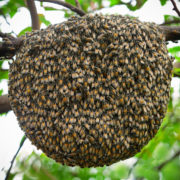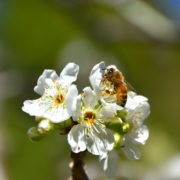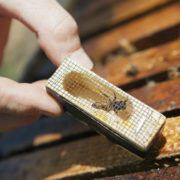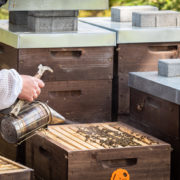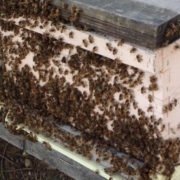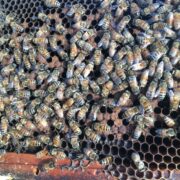Drifting
Looking at a large apiary, it is difficult to believe that an individual forager bee is able to find its way back into the correct colony each time. How do bees not get confused and enter the wrong colony? Well, sometimes bees do, and any individual one colony will collect extra bees from its neighboring colonies.
Over time, bees can be so redistributed in an apiary that certain colonies grow progressively weaker as they lose population, and other colonies grow progressively stronger with larger populations gained from the other colonies. This is known as “drifting.” Beekeepers try to avoid creating situations that cause drifting, because drifting creates population imbalances in an apiary, and can also spread disease.
There are two main ways to prevent bees from drifting into other colonies. The first is by controlling the placement of beehives within an apiary. Long straight lines, which can look clean and attractive to a beekeeper, are definitely not ideal for honeybees. The bees that belong to colonies that are situated in the interior of a long line often have a difficult time finding their way home, since the colonies in the interior look similar; and the only way to distinguish one interior colony from another is to count from the end of the line. Although honeybees have rudimentary counting skills (it has been proven that they can count up to four and five), a long line does not work well for them. Over time, foraging bees in the middle of the line generally will drift towards the hives at ends of the lines, which are easier for them to identify.
The best way to avoid the problem of long straight lines is to set up the apiary with short lines or clusters of colonies that makes it easier for the returning bees to identify their hives. Long lines can generally only work if there are plenty of landmarks in the middle of the line such as unique trees or bushes, which the foraging bees can use as markers to place their hives.
Another way to prevent drifting is to paint the hives different colors. Bees can identify most colors, and this assists the foragers in being able to distinguish one colony from another.
At Wildflower Meadows, preventing drifting is especially important to us, not so much with regard to foraging worker bees, but especially for queen bees that are out on mating flights. Individual queens need to find their way home to the correct colony, or they risk entering a colony that already has a queen. This can lead to a fight and the possible loss of a queen. To prevent drifting, we arrange our mating nucs in distinct patterns. We also paint our colonies different colors to assist returning bees and queens in finding their correct home.

